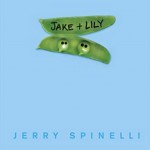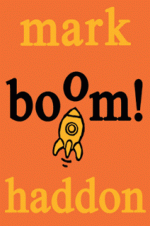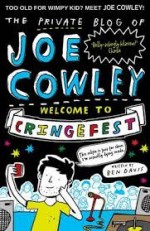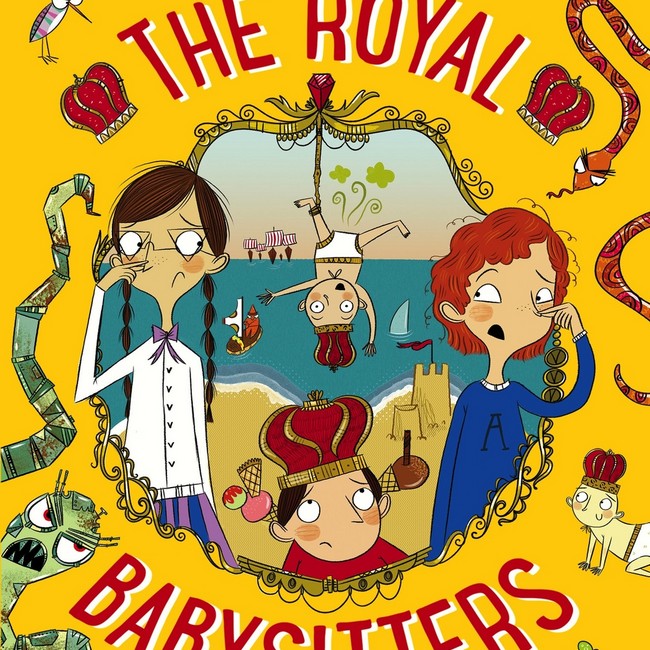November is the month to celebrate non-fiction, thanks to the Federation of Children’s Book Groups, and this year, the theme is The World Around Us. If you hop over to Twitter and check out the hashtag #NNFN , you will see much appreciation for it there really is. After years of being-overlooked, considered to be for research purposes only rather than for pleasure also, non-fiction publishing for children has had a rebirth and in the last five years or so, we have been treated to some ingenious, often highly original titles.
I am delighted that, to celebrate National Non-Fiction November, Laura Knowles has agreed to write about her experience of writing non-fiction. Laura has a background in children’s publishing and is the author of several non-fiction books, which fit this year’s theme perfectly. I first came across her work with the lovely Once Upon a Jungle ; she is also the author of It Starts with a Seed and We Travel So Far…, all published by words & pictures. Her love of natural history, words and art have drawn her to work on books about animals and nature. You can find her on Twitter at @lauramakesbooks
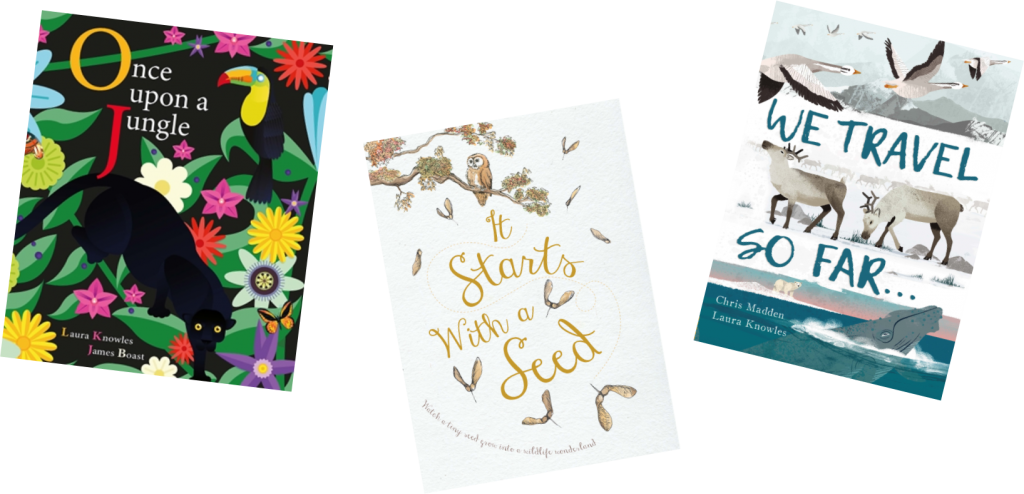
We Travel So Far, Laura’s latest book, is a wonderful exploration of migration and is illustrated by Chris Madden. Each double-spread focuses on a different species, 25 in total, some well-known (the Emperor Penguin for example), some not so well-known (the Norway Lemming) and explains in succinct narrative-style text their migration story. The text is integrated into the artwork which enhances the storytelling rather just fact listing. The gorgeous illustrations are particularly effective at conveying the animals’ journey, with the placement of the animals on the page really highlighting the sense of movement particularly and again the integration in the pictures of the text works wonderfully at highlighting this also, as it is is often shaped to mirror the artwork, and enhance the sense of movement, The colour scheme is varied, allowing readers to get a sense of place and habitat in which those animals live, which is particularly useful for the lesser known species.
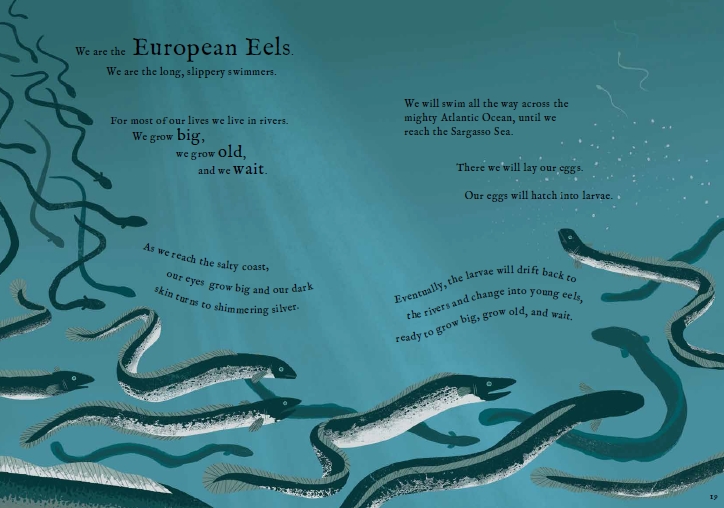
We Travel So Far … is a superbly executed book, which can be leafed through or read from cover to cover, for pure pleasure or as part of research. It is thanks to books like these that I am regaining a fondness for non-fiction.
***
Big Concepts for Little People
by Laura Knowles

How do you explain big concepts to little people? How do you do that in a way that isn’t dry and dull, but simple and lyrical? When Library Mice asked me this, my first thought was “Yikes! Is that what I do? That seems like a big responsibility!” After my initial wave of panic, I sat down and got thinking.
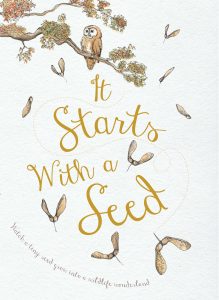 To try and answer this question, I’m going to look at two of my books, It Starts with a Seed and We Travel So Far, discussing the ways I think they tackle big concepts. But first, I think we need to take a step back and look at the medium as a whole. Children grow up with picture books. They’re fun, they’re visual, and they are a shared time between the child and their parent or carer. By using the picture book as a vehicle to embrace non-fiction concepts, we place those concepts within a safe, familiar, and enjoyable form. It is a springboard for a topic, which can then be explored further. What’s more, a narrative non-fiction book can act as one part of a learning experience that encompasses reading for pleasure, school projects, and first-hand exploration of the world.
To try and answer this question, I’m going to look at two of my books, It Starts with a Seed and We Travel So Far, discussing the ways I think they tackle big concepts. But first, I think we need to take a step back and look at the medium as a whole. Children grow up with picture books. They’re fun, they’re visual, and they are a shared time between the child and their parent or carer. By using the picture book as a vehicle to embrace non-fiction concepts, we place those concepts within a safe, familiar, and enjoyable form. It is a springboard for a topic, which can then be explored further. What’s more, a narrative non-fiction book can act as one part of a learning experience that encompasses reading for pleasure, school projects, and first-hand exploration of the world.
So, within this picture book form, how do I explain ‘big concepts’? My first book, It Starts with a Seed, is illustrated with great delicacy and passion by the very talented Jennie Webber. In it, I use a simple, gentle rhyme to take the reader through the life of a sycamore tree, from its beginning as a falling seed, watching it grow through the seasons and years from seedling to sapling and beyond. At the end of the book, we see it as an old, expansive tree that casts off its own seeds to twirl through the air and begin the cycle again.
First and foremost, this is a book for a parent and child to read aloud and enjoy together. On every page, there is so much to spot in the illustrations – What animals can you find? How many squirrels can you count? Can you spot the sleepy owl? How has the tree changed from the page before? – I don’t think that a child has to have any idea of big concepts to enjoy exploring a book. The subject matter itself, I would argue, is not in fact conceptual. It is concrete, or, perhaps more appropriately, solid as wood. Any child who has access to a tree can see it, touch it, pick up its fallen leaves or seed. Grounded as it is in the natural world, It Starts with a Seed invites the child to explore and celebrate something that is part of their everyday experience.

For me, the part of the book that is the ‘big concept’ is that the tree, the protagonist of this simple story, is in fact so much more. It is a whole ecosystem, supporting a great variety of life. This is something that young children will likely not have considered before, and it may be something that they don’t grasp the first time they read the book, or even the second or third, but that won’t hinder their enjoyment. By sowing the seeds of big concepts early and often, by watering them with care and patience, we allow our children time to let these ideas germinate.
 My book about animal migration, We Travel So Far, is longer and more content-heavy than It Start with a Seed. Every child is different, and will be picking up a book at varying stages and ages, so it’s impossible to anticipate what any one reader will be able to digest. Instead, we need to aim to provide something for everyone on each page. In We Travel So Far, I tried to balance the big concept with an interesting viewpoint: we hear from the animals themselves which, to me, pulls us closer to the action. We are taken on a journey with the animals. I’ve tried to make the text as lyrical and rhythmic as possible, so it will be enjoyable to listen to and to read aloud. Each spread can stand alone, so the reader can dip in and out of the book. I call these ‘micro stories’. Last but not least, these stories are brought to life by the incredible illustrator Chris Madden. Every spread has a full, colourful illustration, so a child will have lots to absorb even if they look through the book without reading the words.
My book about animal migration, We Travel So Far, is longer and more content-heavy than It Start with a Seed. Every child is different, and will be picking up a book at varying stages and ages, so it’s impossible to anticipate what any one reader will be able to digest. Instead, we need to aim to provide something for everyone on each page. In We Travel So Far, I tried to balance the big concept with an interesting viewpoint: we hear from the animals themselves which, to me, pulls us closer to the action. We are taken on a journey with the animals. I’ve tried to make the text as lyrical and rhythmic as possible, so it will be enjoyable to listen to and to read aloud. Each spread can stand alone, so the reader can dip in and out of the book. I call these ‘micro stories’. Last but not least, these stories are brought to life by the incredible illustrator Chris Madden. Every spread has a full, colourful illustration, so a child will have lots to absorb even if they look through the book without reading the words.
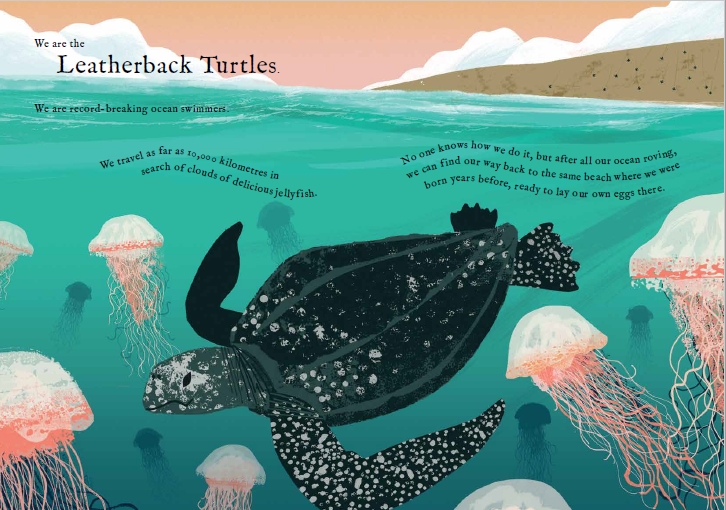

Unlike the story of a tree, which is solid and familiar, the concept of migration does feel like one that will be harder for young children to grasp: after all, they may have never travelled much further than their own home town. How can we expect them to imagine birds flying half way around the world? On the other hand, perhaps the book will be read by a child who is about to move to a new house, or whose relatives live far away… or who has had to undertake a long and dangerous journey to safety. Maybe learning about migration in the animal world will act as a stepping stone to understanding it in their own world. We Travel So Far focuses on animal migration, but at the end of the book there is a spread about how people travel too, for all sorts of reasons.
I began by mentioning how the picture book, as a safe and familiar form, was the perfect vehicle for children to learn about big concepts. I’d like to end by adding that, for the very same reasons, they can be invaluable for adults trying to explain complex subjects to young children. They are a safe space for discovery and discussion.
Maybe the key to it all is that, if you have fun with the words, and there are beautiful, colourful, dazzling pictures to look at, then perhaps you’ll discover that big concepts aren’t really so big after all.
****
Thank you Laura for such a great post. What a wonderful way to celebrate National Non-Fiction November! We Travel So Far is out now and can be purchased here.
Source: review copy


